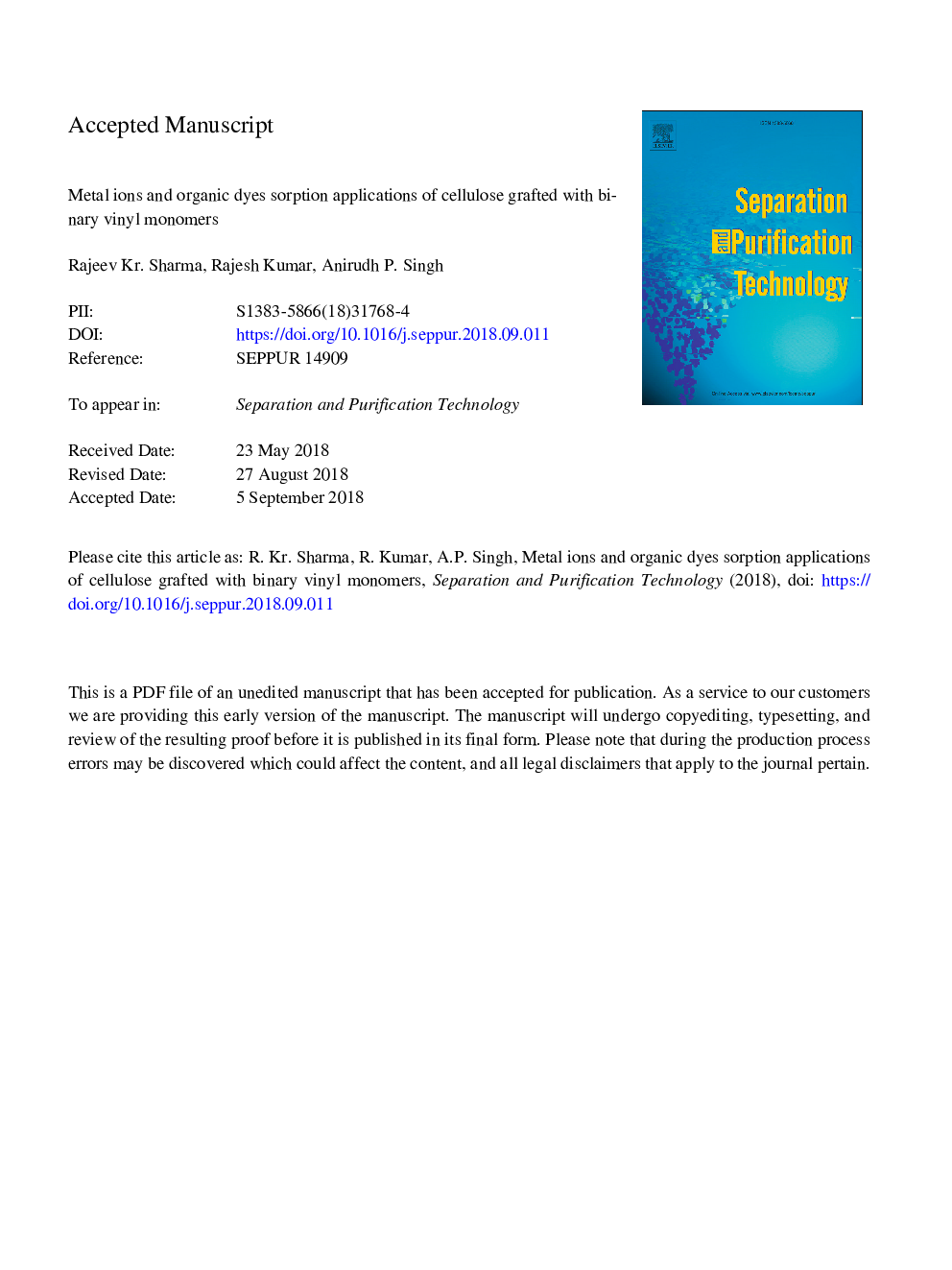| کد مقاله | کد نشریه | سال انتشار | مقاله انگلیسی | نسخه تمام متن |
|---|---|---|---|---|
| 11003337 | 1456912 | 2019 | 54 صفحه PDF | دانلود رایگان |
عنوان انگلیسی مقاله ISI
Metal ions and organic dyes sorption applications of cellulose grafted with binary vinyl monomers
ترجمه فارسی عنوان
یون های فلزی و رنگ های آلی کاربرد برنامه های جذب سلولز با مونومرهای وینیل دودویی
دانلود مقاله + سفارش ترجمه
دانلود مقاله ISI انگلیسی
رایگان برای ایرانیان
کلمات کلیدی
موضوعات مرتبط
مهندسی و علوم پایه
مهندسی شیمی
تصفیه و جداسازی
چکیده انگلیسی
Metal ions and dyes sorption applications of Cell-g-AASO3H-co-GMA were studied, herein. The adsorbent Cell-g-AASO3H-co-GMA was synthesized through grafting of 2-acrylamido-2-methylpropane sulfonic acid (AASO3H) and binary comonomer glycidyl methacrylate (GMA) using potassium persulfate (KPS) as free radical chemical initiator and N,Nâ²-methylene bisacrylamide (NMBA) as cross-linker onto the cellulose extracted from agricultural waste rice husk. The graft copolymer was characterized for morphological, structural, compositional, crystalline and thermal properties through different characterization techniques like FTIR, FESEM, XRD, and TGA/DTA. The swelling behavior of the graft copolymer was evaluated at 2.2, 7.0 and 9.4 pH and compared with the pristine cellulose to explore their applications for the sorption of metal ions and dyes from their aqueous solutions. The adsorption parameters were elaborated for model cationic malachite green (MG) and crystal violet (CV) dyes, anionic congo red (CR) dye and Ni2+ and Cu2+ ions. The adsorption of dyes and metal ions was investigated as a function of contact time, temperature, pH and concentration. The mechanism of the adsorption and the interactions between adsorbent Cell-g-AASO3H-co-GMA and different adsorbates were studied using different kinetics and adsorption isotherms models. The adsorption data for dyes and metal ions fitted well with the pseudo-second-order rate equation and Langmuir adsorption isotherm. The maximum adsorption capacity of Cell-g-AASO3H-co-GMA, obtained from the Langmuir adsorption isotherm for MG, CV and CR dyes were 46.232, 53.533 and 20.942â¯mg gâ1, whereas for Cu2+ and Ni2+ ions it was 78.247 and 69.061â¯mg gâ1 respectively.
ناشر
Database: Elsevier - ScienceDirect (ساینس دایرکت)
Journal: Separation and Purification Technology - Volume 209, 31 January 2019, Pages 684-697
Journal: Separation and Purification Technology - Volume 209, 31 January 2019, Pages 684-697
نویسندگان
Rajeev Kr. Sharma, Rajesh Kumar, Anirudh P. Singh,
